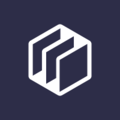
Mobile Application Payment Gateways in 2022
- Mobile Application Payment Gateways in 2022
- What is the Payment Gateway?
- What to Consider Before Mobile Payment Gateway Integration?
- 1.1 Selecting a Merchant Account Type
- 1.2 Products' Type
- 1.3 Security Certificates
- Top 5 Payment Gateway Providers
- Steps of Payment Gateway Integration into Mobile Application
- Direct Credit/Debit Cards Payment Gateway Integration
- Integrating SDKs Into an Application
- How to integrate a payment gateway?
- Conclusion
Mobile Application Payment Gateways in 2022
Credit cards are innovative and convenient payment gateway that have evolved into simple solutions that users can find on various mobile apps & websites. If this functionality is required for your software development project, it is worthwhile to learn more about payment gateway integration, which has become an integral aspect of modern software.
This tutorial will go through how to integrate a payment gateway into your app in-depth and compare payment gateways to pick the best one for your needs.
What is the Payment Gateway?
In simplest terms, Payment Gateway is a feature that enables in-app purchases to be made. In other words, it serves as a link between the client's financial transaction and the payment processor (financial establishment). Its key integration goal is to provide reliable and effective security, which is impossible when an app and a payment processor communicate directly.
Payment gateway security is conditioned by the encryption used to process confidential user data such as CVV codes, credit card numbers, etc.
Stay abreast of the latest trends in mobile application payment gateways with our insightful blog post. As digital transactions continue to evolve, this guide explores the top payment gateways for mobile applications in 2022. Whether you're an app developer, business owner, or consumer, gain valuable insights into the secure and efficient payment options shaping the mobile app landscape.
What to Consider Before Mobile Payment Gateway Integration?
Let's take a closer look at the integration with the payment gateway:
1. Selecting a Merchant Account Type
This account's primary purpose is to allow you to approve online financial transactions. It simply refers to a business's online bank account. Its primary role is to process in-app sales payments (typically take 2-7 days) and direct them to your regular business bank account. Payments are first validated by the chosen vendor and then transmitted to your merchant account when using a payment gateway system.
Here are the two sorts of merchant accounts to choose from, depending on your needs:
1. Dedicated merchant account: This account is specifically designed for your company. It offers a high level of financial transaction administration and operational flexibility for account debiting, financial transaction error editing, fast payment processing, and delivery.
2. Aggregate Merchant Account: This method entails having a joint bank account with the other firms. Financial withdrawal takes longer with this type, and operation management is limited. However, the aggregate type has a cheaper cost.
2. Products' Type
Another factor to consider is the type of merchandise you sell. If you want to share paid digital content, your app must follow the policies and guidelines for in-app purchases on the App Store and Google Play. Because the products sold on those marketplaces cannot integrate third-party services, all actions are done using Apple ID/Gmail.
3. Security Certificates
Your app should adhere to the PCI DSS security standard while handling users' financial information. Unfortunately, an app's certification process is pretty complicated:
- Ensuring that the data processing system in the app adheres to PCI DSS rules.
- Eliminating security holes discovered by pen testers.
- Audit completed by a Qualified Security Assessor-certified organization.
After the final process, your organization will be approved or denied accreditation.
Top 5 Payment Gateway Providers
Let's dive into the list of the top payment gateway solution to use:

1. PayPal
PayPal is one of the best payment gateways that serves clients in over 200 countries and supports 25 different currencies. It charges 2.9 percent of the total amount and $0.30 for each transaction. In addition, PayPal offers additional services such as PayPal Payments Pro, which allows for direct software integration, and PayPal Express Checkout, which allows for creating a button on the app's page.

2. Braintree
Braintree is another excellent service with a top-notch anti-fraud system available in 40 countries and 130 currencies. It offers features such as online customer service and a two-day payout. Its differentiating feature is that it provides buyers with personal merchant accounts. In addition, Braintree provides a software development kit (SDK) for software development services. The fees are the same as those charged by PayPal.

3. Stripe
With Stripe, you'll get permission, checkout functionality, analytics, and other essential capabilities. This provider also provides an SDK that allows developers to incorporate the service into their apps. In addition, Stripe has the exact pricing as the other two options.

4. Dwolla
One of the best payment gateways for mobile apps provides a comprehensive list of payment methods, with a price based on bids. It allows you to send payrolls to thousands of people and invoices to 2000 people. It may be integrated into the most widely used operating systems using OAuth and a RESTful API.

5. Authorize.net
A popular service in the United States and Canada will give you a dedicated merchant account or let you choose your supplier with the Payment Gateway Only option. Other benefits include embedded fraud detection, information operation, frequent charging, and PCI DSS certification with tokenization solutions. The monthly price is $25, and the merchant account setup fee is $49. The transaction cost stays at 2.9 percent plus $0.30.
Also Read: How Much Does Google Maps Api Cost? All Prices and Plans Explained
Steps of Payment Gateway Integration into Mobile Application
Here is the list of the steps to integrate a payment gateway into a mobile application.
1. Planning: Payment gateway providers must be added to the project using CocoaPods, Swift Package Manager, Carthage, and others.
2. Presenting drop-in UI: It entails adding lines to the script or designing a UI from the ground up that directly tokenizes the credit card information. For example, its keys let users directly tokenize purchasing data without having to produce fresh ones each time.
3. Obtaining customer tokens: The next step is to retrieve a client token generated by the server on the app request. Every time the program is relaunched, you should finish the process. The primary goal of tokens is to contain the entire configuration, and authorization enables SDK client initialization.
4. Testing payment gateway performance: Developers should use Braintree test card data and one-time codes. Furthermore, because your credentials include Sandbox merchant ID public and private keys, this phase requires the Braintree Sandbox account.
5. Processing financial operations: To complete the transaction, use a one-time payment option on your server. The following is how the procedure works: the client data is acquired and transmitted to the server to finish the operation.
Direct Credit/Debit Cards Payment Gateway Integration
Payment gateways vendors enable clients to conduct financial transactions via the mobile app API using debit/credit cards. Customers can verify their banking information is sent directly to the merchant checkout page using such a system. APIs or HTTPS are commonly used to process transactions.
Let's take a look at the benefits and drawbacks of integrating a debit/credit card payment gateway:
Pros:
- Possibility to alter the user interface
- PCompatibility with a variety of devices
- With a single solution, you can manage all of your operations.
Cons:
- Merchants are responsible for their security.
- While API integration, security of electronic transactions is necessary.
Integrating SDKs Into an Application
A dedicated payment gateway integration provider assures that its SDK includes mobile libraries that enable the development team to integrate the solution. Plus, you won't have to worry about PCI compliance this way.
The programming languages required for payment gateway integration are listed below:
- JavaScript
- React
- GO
- Java
- Redux
- .NET
- Node.js
- Ruby
- PHP
- Python
Supported customer SDK OS:
- iOS
- Android
How to integrate a payment gateway?
API integration is required for transaction processing in mobile applications, which is dictated by the payment gateway solution selected by the customer. Please keep in mind that selling digital content requires platform-specific gateway solutions such as Apple Pay for iOS and Google Pay for Android.
It takes roughly 40 hours to integrate a payment gateway. Then, after being tested (for about 20 hours), the functionality must be maintained (5-10 hours per month).
Conclusion
Payment gateway integration provides a convenient solution for financial transaction performance for your consumers. However, suppose you want to begin the integration process and improve the quality of your application. In that case, you need to hire a reputable software development company with experience in such a complex process as payment gateway integration. As a result, your program will be safe, efficient, and enjoyable for your users.
Do you have an app idea and want to integrate a seamless payment gateway? If so, your search ends here!
As a leading software and IT development company, Appicial has extensive expertise in apps payment gateway to help diverse startups and businesses across the globe.





